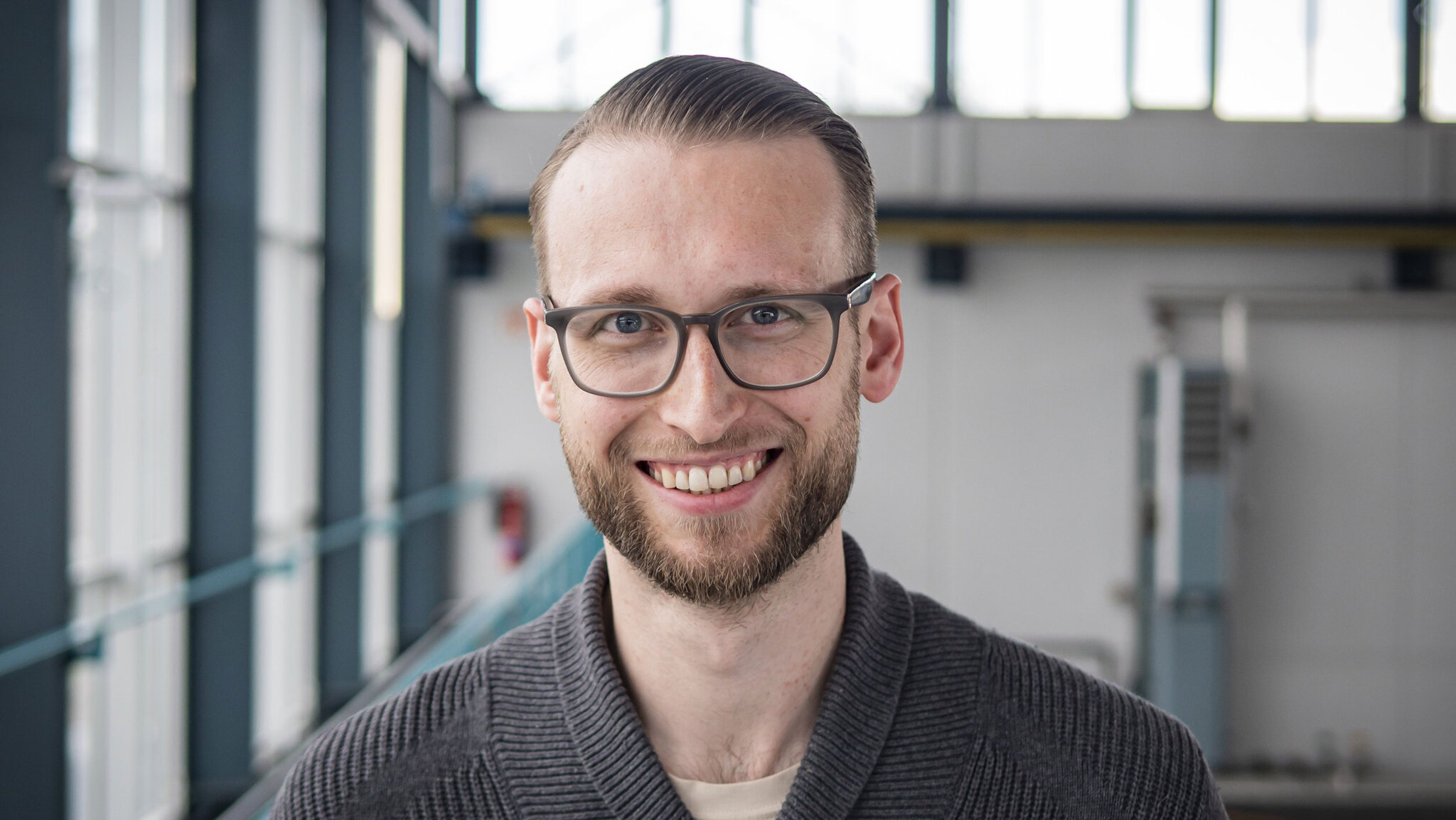
© ZARM / Universität Bremen
Water Eddies and Other Turbulences
First in Cambridge, now in Bremen, Dario Klingenberg investigates the chaos of fluid dynamics
Even in the smallest of streams, small or large eddies and turbulence form when water flows quickly over obstacles. But the exact shapes they take and how they are sustained is complex – so complex that only high-performing computers can calculate them. This is precisely what Dario Klingenberg is doing. up2date. spoke with him about his current work at the University of Bremen as part of a program by the German Academic Exchange Service (DAAD).
First Darmstadt, then Cambridge, now Bremen – you’ve conducted research in many places. How did this come about?
After completing my Ph.D. at the Technical University of Darmstadt, I wanted to conduct research abroad. The DAAD’s “Postdoctoral Researchers International Mobility Experience” program was the perfect opportunity for that. The program involves spending a year and a half at different institutions; twelve months at a university abroad, followed by six months in Germany. I chose the University of Cambridge. Not only did it fit well with my research from an academic point of view, but Cambridge is also an exciting place with a rich tradition of scholarship. In March 2025, I moved to the University of Bremen. Here, I greatly benefit from collaborating with Marc Avila, the head of ZARM, and other researchers working on fluid dynamics and turbulence.
When people hear the word “turbulence,” they probably think of their last vacation flight. But what does it mean from a physical point of view?
Imagine watching water flow through a pipe with one drop dyed to track its movement. If the liquid flows slowly, the drop follows a predictable path that is straight, and runs parallel to the wall. But if the liquid flows faster, eddies form; and suddenly, it becomes nearly impossible to predict which path the drop will take. This is turbulence in the physical sense.
That’s easy to understand – but hard to research?
Yes, it is. And exactly this contrast makes the topic so fascinating to me. The fundamental principles of turbulence have been known for 150 years, but only modern methods allow us to truly understand them. This is where chaos theory comes into play. It states that tiny differences in a system’s initial state can have huge consequences. Such small variations can never be entirely avoided in reality. This explains why chaotic systems can produce completely different results each time an experiment is repeated, even if the conditions are seemingly identical. For example, when water flows over a small obstacle, its reaction can vary dramatically depending on the speed or the shape of the obstacle. Sometimes it forms calm eddies; other times, it suddenly turns into wild chaos. Even the slightest change – such as a little more or less speed, a slightly different angle, or uncontrollable differences in environmental conditions – can entirely alter the behavior of the flow.
How, then, can turbulent flows be predicted?
For this, we typically use high-performance computing clusters—networks of many individual computers working in parallel. In recent years, graphics cards (GPUs) have also become increasingly important in this field and in my own research. With these computers, I simulate what are known as channel flows, where water flows through the gap between two infinitely extended plates. My goal is to understand what keeps turbulence alive, and why it persists under certain conditions and not under others. Interestingly, my findings are transferable to other areas, as the mathematical behavior of liquid and gas flows is fundamentally the same.
What potential applications does your research have?
First and foremost, even though this is foundational research, it is not far removed from practical applications, such as airplane or ship design. A better understanding of turbulence helps construct fuel-efficient components. Turbulence also plays a central role in weather forecasting and the optimization of pipelines. After all, turbulence is highly visual and widespread, which is precisely what makes it such a fascinating area of research for me.